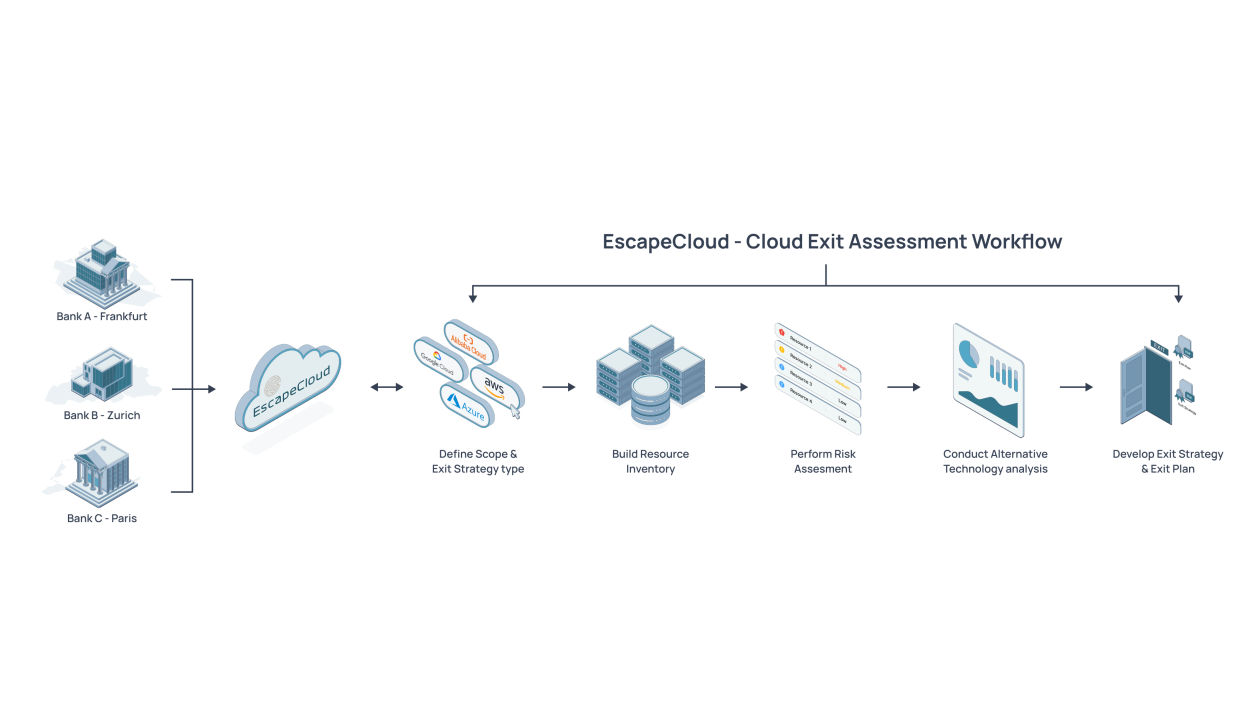
As the financial industry delves deeper into the digital realm, cloud services play an increasingly vital role. Their benefits, from scalability to operational efficiency, are undeniable. Yet, the cloud’s transient nature means institutions must also prepare for potential exits. As highlighted by the European Banking Authority (EBA), a robust cloud exit strategy is paramount. However, the process of formulating such a strategy is fraught with challenges, particularly when relying on traditional assessment methods.
Understanding Traditional Cloud Exit Assessment Methods
Historically, financial institutions have leaned on internal auditors and external consultants to prepare cloud exit strategies and plans. These professionals employ a range of manual processes to assess the institution’s cloud setup, understand contractual obligations, and evaluate potential risks associated with a cloud exit.
While this approach might seem tried and true, it presents several limitations in today’s rapidly evolving tech landscape.
Inherent Challenges of Manual Assessments
Time-Consuming: Traditional assessment methods often involve sifting through vast amounts of data, reviewing intricate contractual details, and evaluating technical setups. This manual approach can be time-intensive, delaying the formulation and execution of a cloud exit strategy.
Expensive: Relying on a team of internal auditors or hiring external consultants can be a costly affair. With their hourly rates and the extended time frames required for manual assessments, financial institutions may find themselves incurring significant expenses.
Inconsistencies and Human Error: Manual assessments, by their very nature, can be prone to inconsistencies. Different auditors might interpret data differently, and the potential for oversight or human error is always present.
Lack of Comprehensive Insights: While human experts bring a wealth of experience, they might not always have the tools to gain a comprehensive view of the institution’s cloud setup. This can lead to gaps in the assessment, potentially resulting in unforeseen challenges during a cloud exit.
Evolving Compliance Requirements: Financial regulations, especially those related to technology and data security, are continually evolving. Manual methods may struggle to stay updated with the latest regulatory changes, putting institutions at risk of non-compliance.
The Growing Need for Automation
Given the limitations of traditional methods, there’s a pressing need for more streamlined, efficient, and comprehensive cloud exit assessment tools. Automation, powered by advanced technologies, presents a promising solution.
Automated tools can quickly scan and analyze vast datasets, providing insights in a fraction of the time it would take manual methods. These tools can also be updated regularly to reflect the latest regulatory changes, ensuring compliance. Furthermore, automation reduces the risk of human error, ensuring consistent and reliable assessments.
The Role of AI and Machine Learning
Modern cloud exit assessment tools are increasingly leveraging Artificial Intelligence (AI) and Machine Learning (ML) for enhanced insights. These technologies can:
Predict Potential Challenges: By analyzing historical data and patterns, AI can predict potential challenges institutions might face during a cloud exit.
Provide Cost Estimates: AI-driven tools can provide financial institutions with more accurate cost estimates related to cloud exits, from migration costs to potential contractual penalties.
Ensure Comprehensive Assessments: ML algorithms can continuously learn from new data, ensuring that assessments are thorough and take into account the latest trends and patterns.
In Conclusion
As the financial industry’s reliance on cloud services grows, the importance of a robust and efficient cloud exit strategy becomes increasingly evident. While traditional assessment methods have their place, their limitations in today’s dynamic tech landscape are clear. Financial institutions must look towards modern, automated solutions to ensure that their cloud exit strategies are not only compliant but also efficient, cost-effective, and comprehensive.
In the coming weeks, we will explore how cutting-edge solutions are revolutionizing the cloud exit assessment process, providing financial institutions with the tools they need to navigate the cloud confidently.


